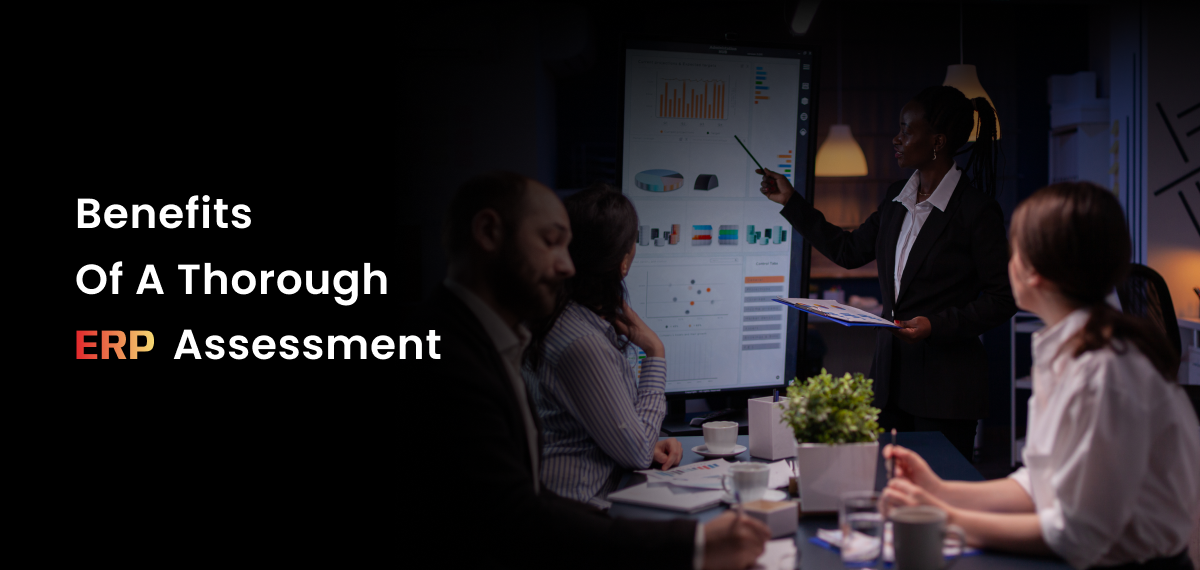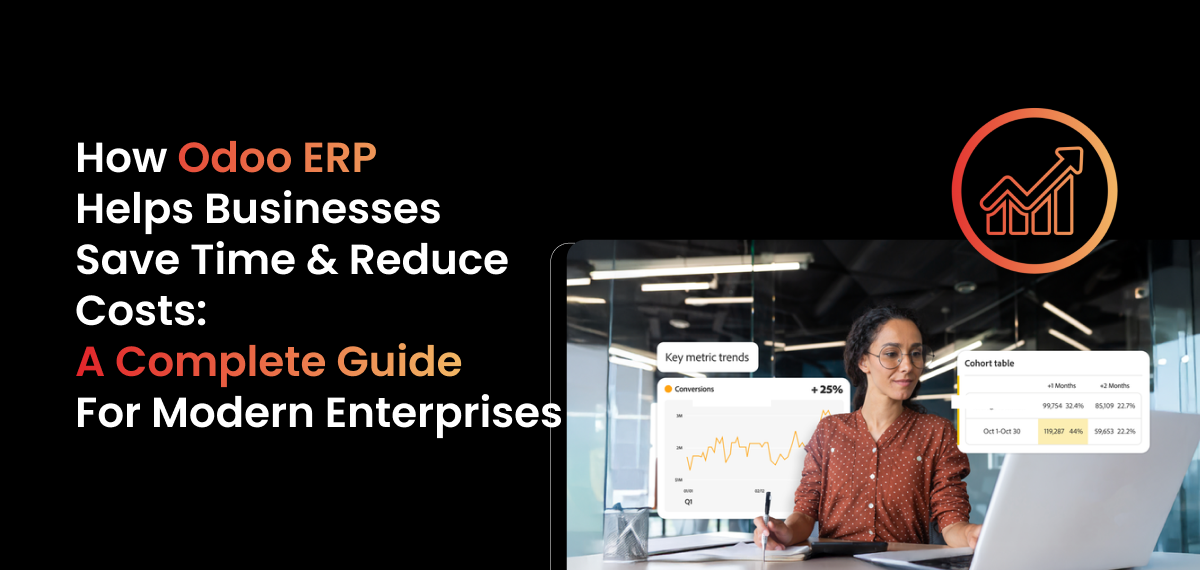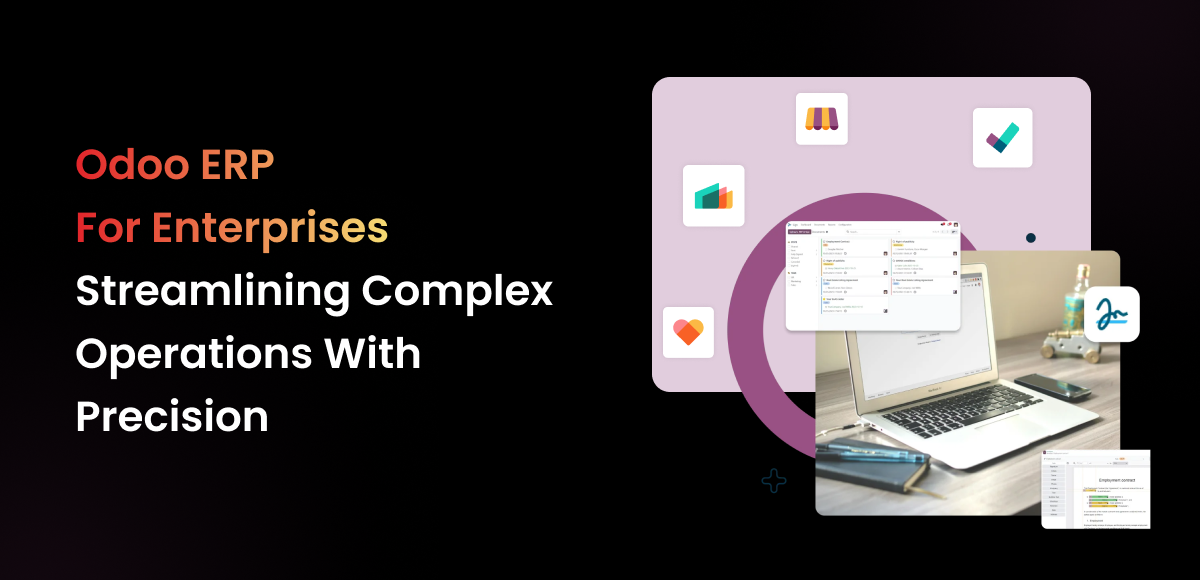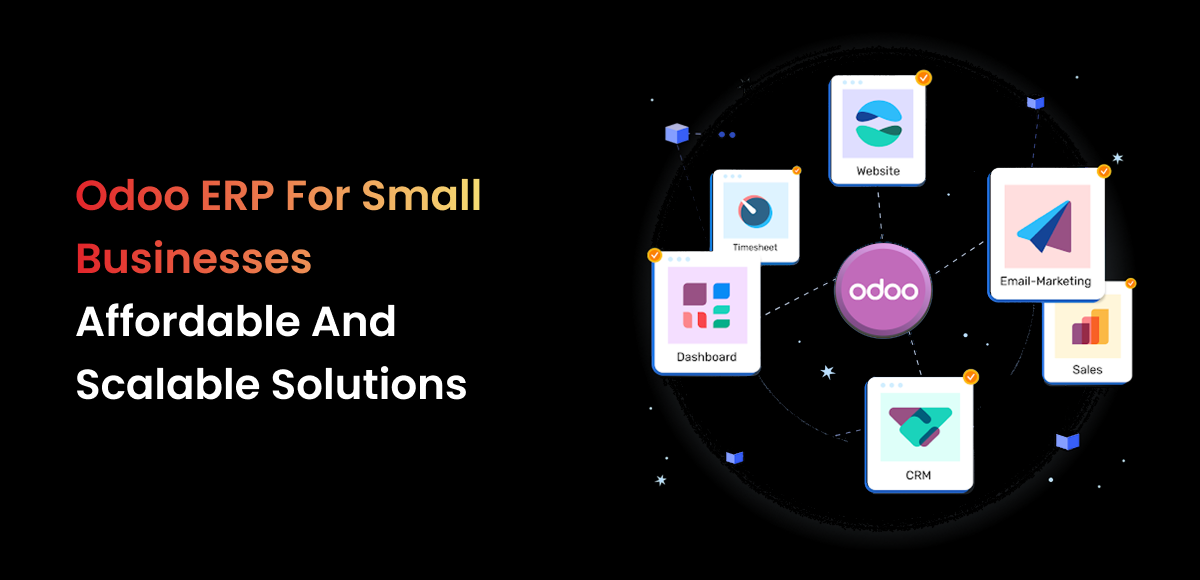With the advent of globalization, businesses strive to be the best among their competitors and, as a result, have embraced the use of modern-day technology in providing services to their clients. One of the most common expenditures that a lot of businesses incur is investing in an ERP system.
An ERP system integrates all levels of an organization, including its finance department, human resource management, distribution, and even inventory control systems into a single structure. On the other hand, rolling out an ERP solution is a mammoth task.
To make it work, carrying out a pragmatic assessment of the ERP is necessary. This essay will consider why it is important to economic efm surplus management and elaborate on how businesses benefit from its assessment in increasing their return on resources focused on ERP systems.
Top 6 Benefits of Thorough ERP Assessment
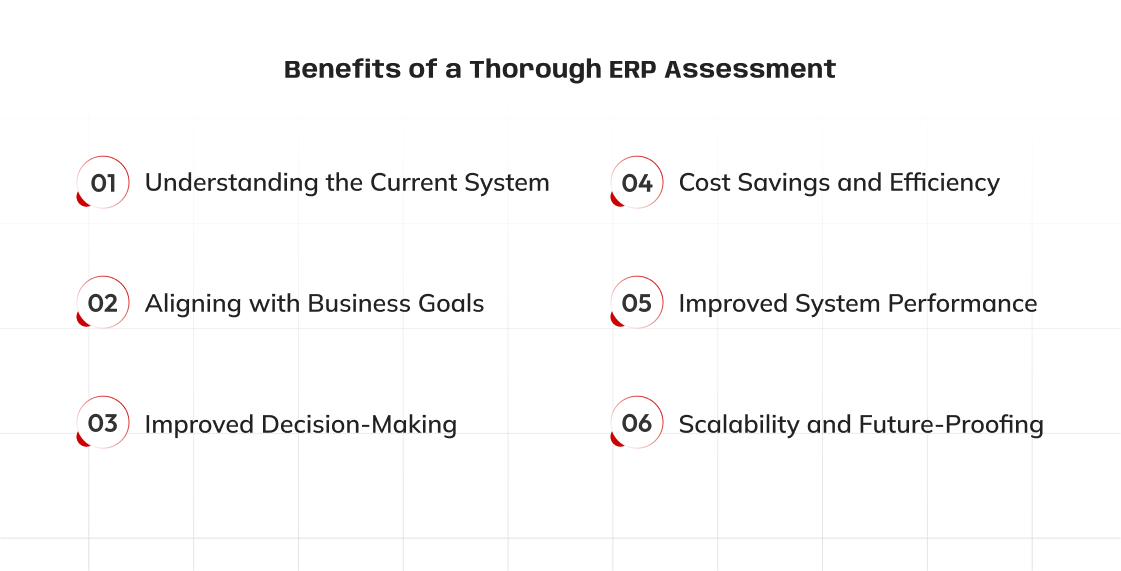
1. Understanding the Current System
To avoid spending time and resources on new ERP systems or even upgrading the ones already in use, it is essential to look at the existing ones first. Quite a several organizations still stick to their old, ineffective, or incongruent practices that hamper, rather than encourage, growth. An effective ERP review enables the clients to analyze their business processes more thoroughly, looking for the gaps and redundancies within them.
Uncovering Pain Points
Troubleshooting rushes often leads to problems, in practice becoming a problem, with time. So, an ERP assessment is intended to locate this specific ‘pain’ area within the broader organizational processes.
The intangible issue can be an excess of idle people or resources or an incessantly outdated methodology. In the long run, by focusing on eliminating these problems, a company can optimize the processes used in its best internal practices.
Assessing the Current Technology Landscape
A simple yet evident problem survey every organization has its leagues, or even a multitude of them, of systems, most of which are unlinked, and non-reliant on each other. To establish a functioning ERP, the assessment of the technology layer is critical in confirming that all infrastructures will work with the ERP system. This step is important to avoid any issues of this nature in terms of integration after the system is in place.
2. Aligning with Business Goals
An ERP assessment is focused on ensuring that the ERP system helps in achieving the overall goals of the organization. Every organization is different and simply using the same ERP solution across the board will not suffice. This is why a proper assessment has to be conducted so that the actual requirement in the business is understood and the potential system that will be hired or developed fits the need.
Short-Term vs. Long-Term Goals
An ERP assessment outlines the present and potential goals. For instance, in the immediate future, one of the companies may want to implement an ERP system to resolve the issues within the financial reporting system.
However, in the long run, this company may want the ERP system to allow them to penetrate different markets. Recognizing both short and long-term goals helps to see to it that the ERP system is not only adjustable but also expandable to cater for future increases in the business.
Competitive Edge
When a particular ERP system is so integrated into the corporate strategy of a firm, that particular firm gains a strategic competitive advantage over others in the same industry. Having done the assessment, one can take the risk of implementing the ERP knowing that the system will not only be appropriate for the current business but also for the business that the company wishes to achieve in providing products and services in the market.
3. Improved Decision-Making
One of the greatest advantages of performing a thorough ERP assessment is the effect it has on the decision-making curves that are organizational or operational. ERP systems are built to enhance levels of efficiency thanks to the availability of information on a timely basis which in turn helps in decision-making on all segments of the business.
Nevertheless, that could be possible if only the ERP in question has been properly and appropriately configured; otherwise, the system may provide misleading or incomplete information.
Data-Driven Insights
There is also an emphasis on actionable intelligence facilitated by performing an ERP evaluation. This is especially true when making decisions based on data almost in real-time. Thus performing a better ERP evaluation augments the capacity of the organization to get away with strategic decisions without minimal doubt of the quality of the data.
Proactive Problem Solving
The lack of proper implementation of the ERP system results in the installation of potential issues in the business environment, such as anticipating when there will be supply chain management or cash flow problems.
An ERP assessment makes sure that such systems, which should be the ability of the business to manage the potential up and down turns of business, are done right and that the business can act rather than wait for a crisis. This kind of thinking enables companies to avoid wasteful blunders and keeps the wheels running without a hitch.
4. Cost Savings and Efficiency
The first benefit that strikes someone is cost savings from an ERP assessment or a potential cost savings from optimizing the ERP system in other cases. As a result, businesses can diminish the expenses incurred in their operations.
Eliminating Redundant Processes
The process of ERP assessment is so thorough that such repetitive and unproductive steps come out for cutting down of waste. The removal of the steps allows the organization to cut its operating costs and increase efficiency rates.
Streamlined Operations
One of the primary goals of ERP software is to facilitate better coordination across the organization’s different units. In such a way, businesses can maximize the efficiency of the ERP system by analyzing any processes that can be made more efficient. As a result, such an increase in efficiency lowers the costs of operation and increases the level of productivity attained.
Avoiding Over-Investment
In the absence of a complete assessment of ERP, the companies are prone to incur unnecessary expenses by including capabilities they may never need. This is made possible by an assessment which concentrates on the main points and as a result, helps to cut down the waste of money and resources over time.
5. Improved System Performance
The performance of the existing system is one of the critical factors in ERP evaluation. Numerous organizations have undertaken the implementation of ERP systems but forget to assess their effectiveness over time, hence the system underperforms and becomes inefficient.
Customization for Maximum Performance
It is often the case that many organizations will need to modify the application to suit their specific business processes. An ERP evaluation ascertains the functionality of the system on these processes, and at the same time, ensures that the extra functionalities that might complicate the adoption of the system in the future are avoided. This ensures that the ERP is optimized and adds value to the organization.
Boosting Productivity
Most of the time a detailed ERP analysis reveals a space where the existing system can be adjusted to increase productivity levels. Be it about workflows or additional system integrations, enhancing system performance presents a possibility of positively affecting the productivity levels of the whole enterprise.
6. Scalability and Future-Proofing
Also, in ensuring its overall effectiveness, an ERP evaluation possesses another pertinent usefulness that aids in safeguarding the business in the years to come. Indeed, when companies expand, the enterprise resource planning systems (ERPs) of those companies should also expand.
A comprehensive evaluation makes certain that the structure is incrementally expandable and can accommodate changes in the external environment of the business in the future.
Preparing for Growth
One of the most critical aspects of the ERP evaluation concerns the evaluation of whether the system can scale up to satisfy the needs of the growing business. Whether a business is geographically expanding its activities, entering into new global markets, or offering new product lines, the business’s ERP system must facilitate these activities without any decline in serving the business itself.
Adapting to Industry Changes
The business world is not static, and neither are its operational processes. This calls for a decisive evaluation of the ERP tool; to confirm its possible changes in terms of configuration or components. This could also be a transition in regulation, a shift in customer patterns, or better still technology. Regular evaluation of the system will lower the risk posed by the changes and maintain the system’s relevancy and competitiveness.
Conclusion: Why an ERP Assessment is Crucial for Success
Whether it is about ensuring the system supports the organization’s aims, facilitates decision-making, increases efficiency, or improves system effectiveness, an in-depth ERP assessment is a beneficial exercise.
It also protects the business from changes in the environment, allows for greater user acceptance and satisfaction as well as assures adherence and safety. Performing regular ERP assessments helps to take full advantage of the investment made in the ERP and helps the ERP system itself to adapt over time as the market changes.
At Braincuber, we appreciate the value of a comprehensive ERP assessment. With the use of our services, we assist our clients in finding weak links and modifying the ERP so that it performs its functions more effectively. These measures help ensure that your investment in the ERP system will not be wasted but will go a long way in helping your business achieve its objectives.
Frequently Asked Questions (FAQs)
1. What is an ERP assessment, and why is it important for businesses?
An ERP assessment is a comprehensive evaluation of your organization’s ERP system to identify inefficiencies, gaps, and opportunities for improvement. It ensures system alignment with business goals and maximizes ROI by reviewing performance, processes, data, and infrastructure.
2. How does an ERP assessment help reduce costs and improve efficiency?
ERP assessments reduce costs by streamlining operations, removing redundancies, and preventing overspending on unnecessary features. Businesses often achieve 15-30% cost savings through automation and better process coordination.
3. What are the key components evaluated during a thorough ERP assessment?
Key components include system performance, business process alignment, data quality, integrations, user adoption, and security compliance. Scalability, customization needs, ROI analysis, and risk assessment are also part of a thorough review.
4. How often should businesses conduct ERP assessments?
Businesses should conduct full ERP assessments annually or biannually, with quarterly lighter reviews. Major assessments are crucial before upgrades, expansions, or mergers, or when performance and compliance issues appear.
5. What are the long-term benefits of regular ERP assessment for business growth?
Regular ERP assessments ensure scalability, optimized performance, compliance, and informed decision-making. Long-term benefits include improved ROI, competitive advantage, customer satisfaction, and agility to adapt to industry changes.
